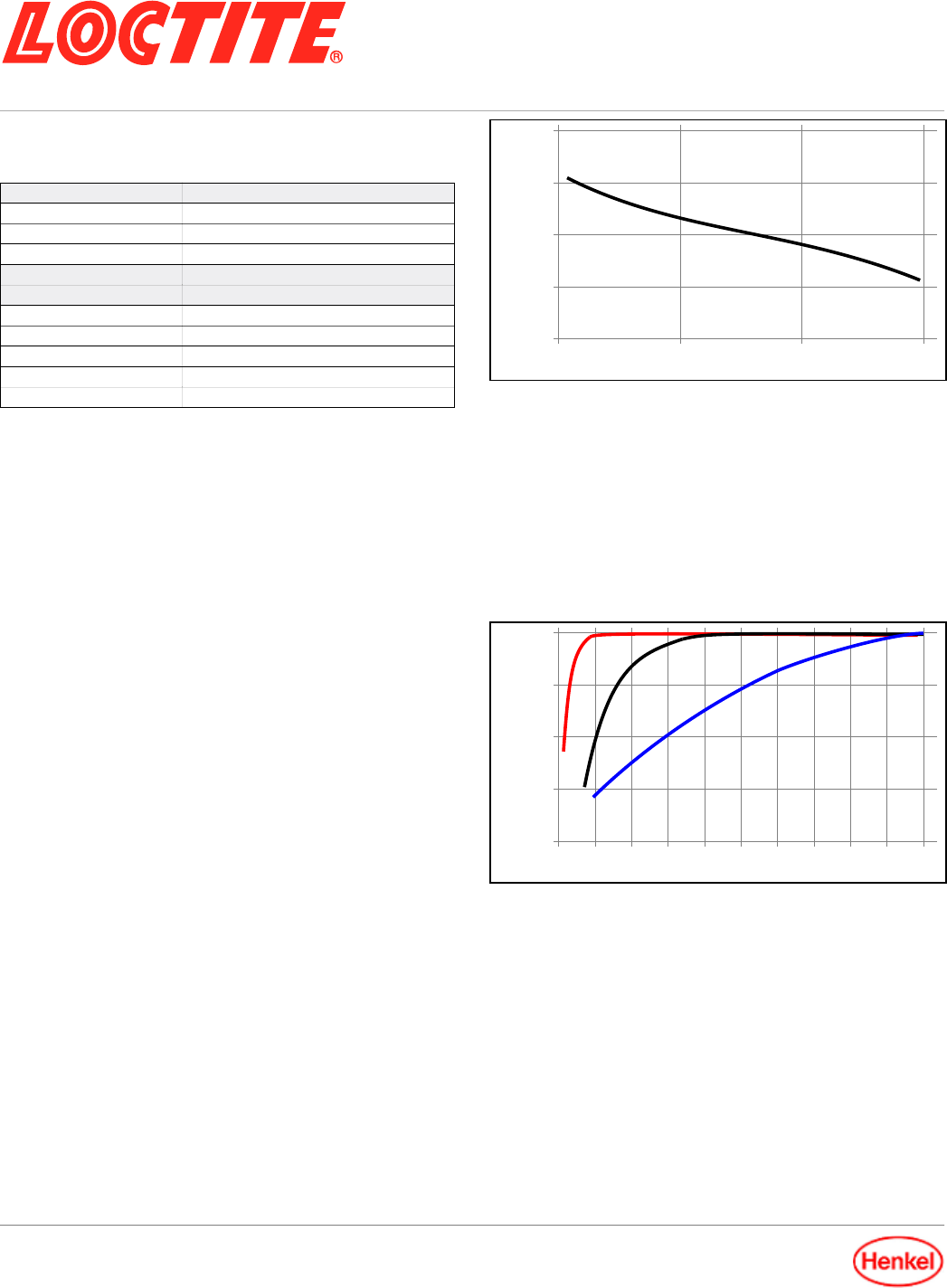
Technical Data Sheet
LOCTITE
®
3609™
March-2008
PRODUCT DESCRIPTION
LOCTITE
®
3609™ provides the following product
characteristics:
Technology Epoxy
Chemical Type Epoxy
Appearance (uncured) Dark, red viscous gel
LMS
Components One component - requires no mixing
Cure Heat cure
Application Surface mount adhesive
Key Substrates SMD components to PCB
Other Application Areas Small parts bonding
Dispense Method Syringe
Dispense Speed Medium 15,000 -25,000 dots/h
Wet Strength High
LOCTITE
®
3609™ is designed for the bonding of surface
mounted devices to printed circuit boards prior to wave
soldering. Particularly suited for applications where medium to
high dispense speeds, high dot profile, high wet strength and
good electrical characteristics are required. LOCTITE
®
3609™
has been used successfully in lead free processes with water
and alcohol based fluxes under conditions outlined in the
Environmental Resistance section.
TYPICAL PROPERTIES OF UNCURED MATERIAL
Specific Gravity @ 25 °C 1.2
Particle Size, µm <150
Flash Point - See MSDS
Yield Point, 25 °C, Pa
Cone & Plate Rheometer:
Haake PK 100, M10/PK 1 2° Cone
250 to 700
LMS
Casson Viscosity @ 25 °C, Pa∙s
Cone & Plate Rheometer:
Haake PK 100, M10/PK 1 2° Cone
0.16 to 2.0
VISCOSITY VS. TEMPERATURE
The following graph shows a typical temperature-viscosity
curve as measured using a Haake rotoviscometer PK100,
M10/PK1 2° Cone system at a shear rate of 2 s
-1
which is
representative of the shear rate in the dispense nozzle.
Increased cabin or nozzle temperature in the 30°C to 35°C
range may aid dispense performance at higher dispense
speeds.
Viscosity, Pa∙s
Temperature, °C
400
300
200
100
0
20 25 30 35
TYPICAL CURING PERFORMANCE
Recommended conditions for curing are exposure to heat
above 100 °C (typically 90-120 seconds @ 150 °C). Rate of
cure and final strength will depend on the residence time at the
cure temperature.
Cure Speed vs. Time, Temperature
The following graph shows the rate of torque strength
developed with time at different temperatures. These times are
defined from the moment the adhesive reaches cure
temperature. In practice, total oven time may be longer to allow
for heat up period. Strength is measured on 1206 capacitors @
22 °C, tested according to IPC SM817, TM-650 Method 2.4.42.
% of Full Strength
Time at Temperature, minutes
100
75
50
25
0
0 1 2 3 4 5 6 7 8 9 10
150°C
125°C
100°C
TYPICAL PROPERTIES OF CURED MATERIAL
Cured for 30 minutes @ 150 °C
Physical Properties:
Coefficient of Thermal Expansion,
ISO 11359-2, K
-1
145×10
-6
Coefficient of Thermal Conductivity, ISO 8302,
W/(m·K)
0.4
Glass Transition Temperature, ASTM D 4065, °C 73
Specific Heat, kJ/(kg·K) 0.3
Density, BS 5350-B1 @ 25 °C, g/cm³ 1.4
